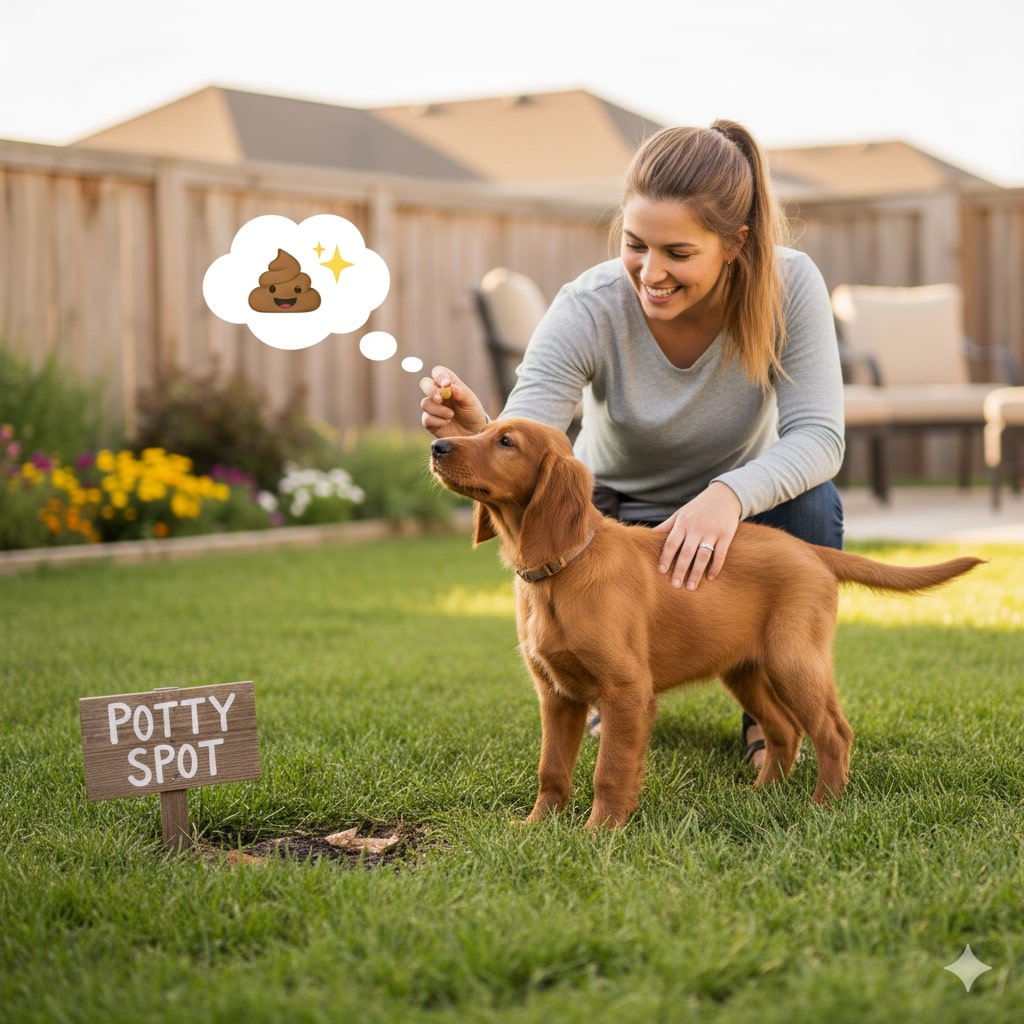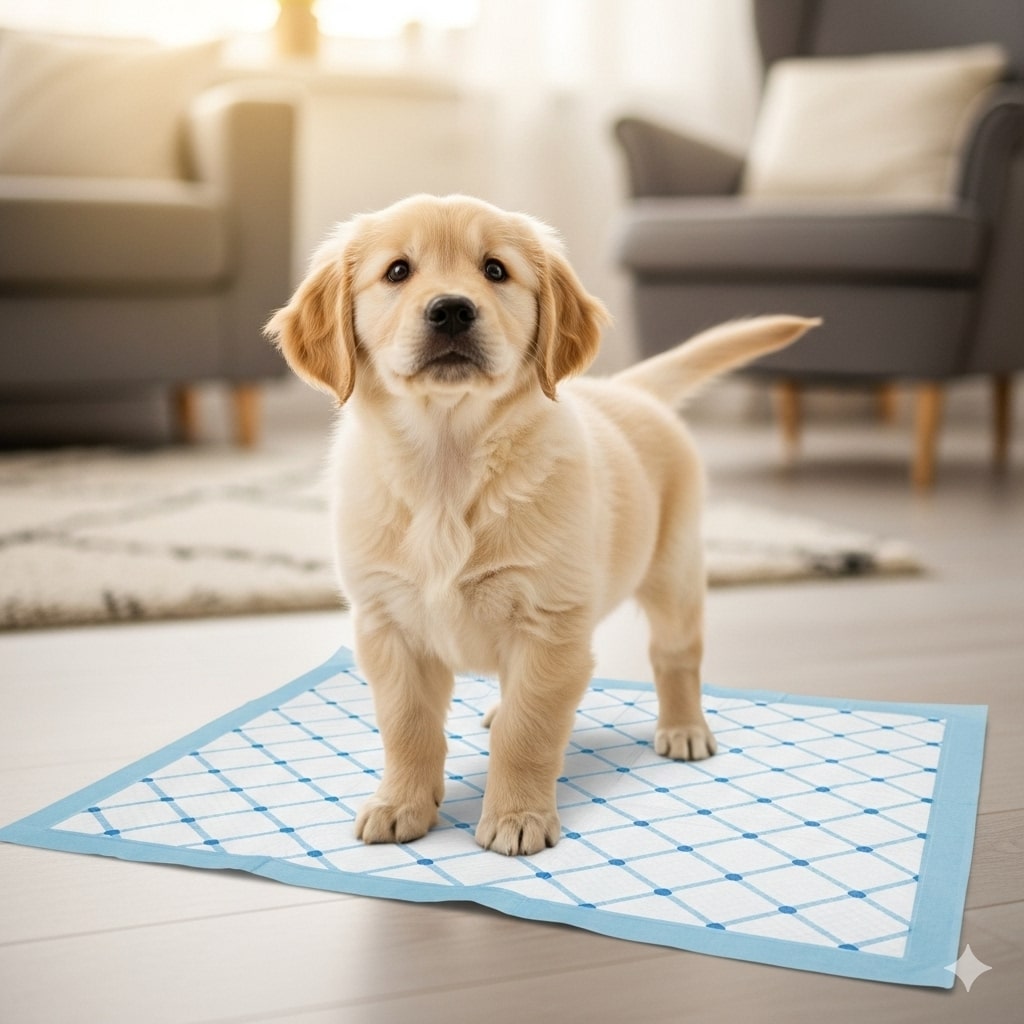Simple and Practical Tips for Stress-Free Puppy Toilet Training
Toilet training your puppy is one of the most important steps in ensuring a happy and clean home. Puppies are adorable, curious, and energetic, but without proper guidance, they can create a lot of mess and stress. Effective toilet training not only keeps your home clean but also teaches your puppy discipline, patience, and trust. In this guide, we will cover everything you need to know about potty training, including schedules, methods, troubleshooting tips, breed-specific advice, and advanced strategies.
Toilet training your puppy can be a challenging yet rewarding experience. Puppies are adorable, playful, and full of energy, but without proper guidance, they can create a mess in your home. Toilet training is an essential step in teaching your puppy discipline and establishing a harmonious environment for both you and your furry friend. This guide will provide easy, effective, and step-by-step toilet training tips for puppies of all ages.

Discover More: Affordable Dog Grooming Tips for Busy US Pet Owners
Table of Contents
- Why Toilet Training is Important
- Understanding Puppy Behavior
- When to Start Toilet Training
- Toilet Training Methods
- Crate Training
- Paper or Pad Training
- Outdoor Training
- Step-by-Step Toilet Training Guide
- Daily Toilet Training Schedule
- Breed-Specific Toilet Training Tips
- Handling Accidents and Troubleshooting
- Advanced Toilet Training Techniques
- Supplies Needed for Toilet Training
- Frequently Asked Questions (FAQ)
- Conclusion
Why Toilet Training is Important
Toilet training is not just about cleanliness. It plays a crucial role in your puppy’s mental and emotional development. Here’s why it matters:
- Develops discipline and routine: Puppies learn that there are appropriate times and places to relieve themselves.
- Reduces stress: Prevents frustration for both you and your puppy.
- Prevents destructive behavior: Untrained puppies may chew or mark objects due to anxiety.
- Strengthens bonding: Training teaches communication and trust between you and your puppy.
- Supports health: Prevents urinary tract infections and helps monitor your puppy’s health through their elimination patterns.

Learn more: Best Dog Grooming Tips for Busy Pet Owners in the USA
Understanding Puppy Behavior
Understanding how puppies behave is critical to effective toilet training. Puppies have limited bladder control, and their actions often give clues about when they need to go.
Common signals:
- Sniffing or circling: Searching for a spot to relieve themselves.
- Whining or pacing: Indicating discomfort or urgency.
- Restlessness after eating or sleeping: Puppies usually need to go within 10–20 minutes after meals or naps.
- Excitement urination: Puppies sometimes urinate when they’re overly excited or scared.
Recognizing these signals helps prevent accidents and reinforces positive habits.
When to Start Toilet Training
The best time to start toilet training is around 8–12 weeks old. Puppies younger than 8 weeks may not have sufficient bladder control, but early training focuses on routines and habits.
Tips for starting:
- Begin with positive reinforcement, not punishment.
- Keep sessions short and consistent.
- Expect occasional accidents; patience is essential.
Toilet Training Methods
Choosing the right method depends on your lifestyle, living situation, and your puppy’s temperament.
Crate Training
Crate training is highly effective because dogs instinctively avoid soiling their sleeping area.
Steps for crate training:
- Choose a crate that fits your puppy comfortably.
- Introduce the crate positively with treats and toys.
- Take your puppy outside immediately after leaving the crate.
- Gradually extend crate time as your puppy adapts.
Pros:
- Encourages self-discipline
- Reduces indoor accidents
- Supports travel and vet visits
Cons:
- Requires careful supervision
- Overuse can lead to anxiety
Paper or Pad Training
Using puppy pads or newspapers is convenient for indoor spaces.
Steps:
- Place the pad in a consistent location.
- Encourage your puppy to use the pad with treats and praise.
- Gradually move the pad toward the door if transitioning to outdoor training.
Pros:
- Convenient for apartment living
- Prevents messes indoors
Cons:
- Puppies may prefer pads over outdoor training
- Can prolong dependence on indoor potty spots
Outdoor Training
Outdoor training is ideal if your goal is to have your puppy eliminate only outside.
Steps:
- Pick a consistent outdoor toilet spot.
- Take your puppy there frequently, especially after meals, naps, and playtime.
- Use immediate praise and treats for successful elimination.
Pros:
- Establishes a clear, lifelong habit
- Keeps your home clean
Cons:
- Requires frequent outdoor trips
- Weather and convenience may pose challenges
Step-by-Step Toilet Training Guide
Step 1: Create a Schedule
Consistency is crucial. Puppies thrive on routine. Here’s a recommended schedule for an average 2–4-month-old puppy:
- Morning wake-up: Take the puppy outside immediately.
- After meals: Most puppies need to go 10–15 minutes after eating.
- After naps: Puppies usually need to relieve themselves right after waking.
- Evening playtime: Take the puppy out before bedtime.
- Nighttime: Initially, one nighttime trip may be necessary.
Step 2: Observe Your Puppy’s Signals
Learn to recognize signs your puppy needs to go. Respond immediately to:
- Sniffing or circling
- Whining or pacing
- Sudden restlessness
Step 3: Choose a Designated Toilet Spot
Consistency helps your puppy associate a specific location with elimination:
- Outdoors: Select a quiet, accessible spot
- Indoors: Use a pad in the same place every time
Always bring your puppy to this spot, even for brief trips.
Step 4: Reward and Reinforce Positive Behavior
Positive reinforcement encourages repeat behavior:
- Offer treats and praise immediately after elimination
- Avoid scolding; accidents are learning opportunities
- Gradually reduce treats as the behavior becomes habitual
Daily Toilet Training Schedule
Here’s a sample schedule for a 3-month-old puppy:
| Time | Activity | Toilet Training Tip |
| 6:30 AM | Wake up | Take puppy outside immediately |
| 7:00 AM | Breakfast | Take puppy outside 10–15 min after eating |
| 8:30 AM | Playtime | Observe for signals, take out if needed |
| 12:00 PM | Lunch | Take outside 10–15 min after eating |
| 2:00 PM | Nap | Take outside immediately after waking |
| 5:00 PM | Evening play | Monitor for signals, take outside |
| 6:30 PM | Dinner | Take outside 10–15 min after eating |
| 9:00 PM | Pre-bedtime | Take outside before crate/bedtime |
| 1:00 AM | Optional nighttime trip | For very young puppies only |
Adjust this schedule based on your puppy’s breed, age, and bladder capacity.
Breed-Specific Toilet Training Tips
Different breeds may require slight modifications to training:
- Small breeds (Chihuahuas, Yorkies): Smaller bladders, frequent trips every 30–45 minutes
- Medium breeds (Beagles, Bulldogs): Moderate bladder control, standard schedule works
- Large breeds (Labradors, German Shepherds): May take longer to gain bladder control; patience is key
- High-energy breeds (Border Collies, Huskies): Often distracted; keep them focused during toilet breaks
Handling Accidents and Troubleshooting
Accidents are part of the learning process.
Tips:
- Stay calm: Never punish your puppy
- Clean properly: Use enzymatic cleaners to remove odors
- Observe patterns: Adjust schedule based on accident frequency
- Shorten crate time if needed: Too long in crate can lead to accidents
Common issues:
- Refusal to eliminate in chosen spot: Use treats, guide the puppy, be patient
- Excitement urination: Greet puppy calmly, avoid excessive excitement at first
- Nighttime accidents: Limit water intake and schedule a last nighttime potty break
Advanced Toilet Training Techniques
Once basic training is established, refine habits:
- Gradually increase independence: Allow your puppy to explore more while supervising
- Use verbal cues: Train your puppy to associate words like “go potty” with elimination
- Transition from pads to outdoors: Gradually move pads toward the door, then outside
- Nighttime control: Gradually increase time between trips as bladder control improves
Supplies Needed for Toilet Training
Having the right supplies makes training easier and stress-free:
- Crate
- Puppy pads or newspapers
- Treats for positive reinforcement
- Enzymatic cleaner for accidents
- Leash for outdoor trips
- Timer or chart for scheduling
Frequently Asked Questions (FAQ)
Q1: How long does toilet training take?
A: Most puppies are reliably trained between 4–6 months with consistent routines.
Q2: Can all breeds be trained the same way?
A: Methods are similar, but small breeds may require more frequent trips.
Q3: How do I prevent nighttime accidents?
A: Limit water intake before bed and schedule a pre-bedtime potty trip.
Q4: What if my puppy refuses to go outside?
A: Use treats, patience, and consistency. Avoid forcing your puppy, which can create fear.
Q5: Should I punish my puppy for accidents?
A: Never. Punishment creates fear and delays learning. Focus on positive reinforcement.
Conclusion
Toilet training is essential for a happy, healthy, and clean home. By understanding your puppy’s behavior, using consistent schedules, and reinforcing positive habits, toilet training can become an easy and effective process.
Key takeaways:
- Start early, around 8–12 weeks
- Use positive reinforcement, not punishment
- Choose a consistent toilet spot
- Follow a structured daily schedule
- Be patient and observant of your puppy’s signals
With these toilet training tips for puppies, your puppy will grow into a well-behaved and confident adult dog. Start today, stay consistent, and enjoy a harmonious life with your furry friend!
⚠️ NOTE: This post is for informational purposes only. Please see our full Disclaimer Page for details.
